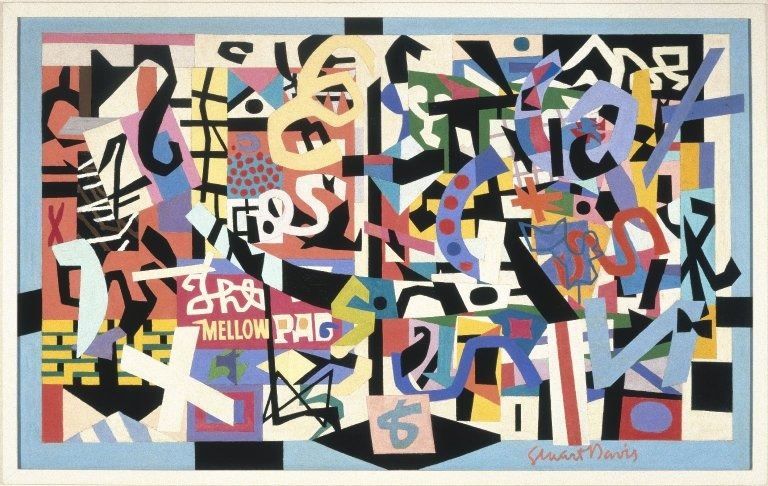Jazz and the Visual Arts
by Giselle Villatoro of Sample
Subject Arts - Visual
Lesson Overview: Visual Thinking Strategies allow students to develop flexible and rigorous thinking skills, including observing, brainstorming, reasoning with evidence, speculating, cultivating point of view, reflecting, and revising.
Students will be able to:
- Begin a process of looking at and responding to art objects.
- Comment on what they see in the pictures presented.
- Hear the ideas of others.
- Hear teacher’s acknowledgement and support of their responses.
Common Core Connection:
National Standards for United States History1 (grades 5-12)
Students should be able to:
- appreciate historical perspectives (Historical Comprehension Standard 2f).
- draw upon visual, literary, and musical sources including...folk, popular and classical music, to clarify, illustrate, or elaborate upon information presented in the historical narrative (Historical Comprehension Standard 2i).
- draw comparisons across eras and regions in order to define enduring issues as well as large-scale or long-term developments that transcend regional and temporal boundaries (Historical Analysis and Interpretation Standard 3d).
- analyze...the influence of ideas (Historical Analysis and Interpretation Standard 3e).
- the influence of the past (Historical Analysis and Interpretation 3j).
Introduce Visual Thinking Strategies:
Ask students what they think Visual Thinking Strategies might mean.
- Briefly explain the process of looking at an image and the ground rules. Make sure they understand that they will be looking at art and will be encouraged to think, to contribute ideas and observations, to listen, and to build understandings together.
Ground Rules
- One speaker at a time.
- Raise hand to comment, lower hand if not called on to listen to fellow student.
- Teacher will paraphrase after each student comment.
- Be respectful of others’ thoughts.
This lesson plan is meant to be connected to prior knowledge of Jazz and its history in American culture (check out the related links section at the bottom to Jazz and the Harlem Renaissance).
Steps:
1. Ask students to silently examine the first image, The Mellow Pad by Stuart Davis.
2. Whole Group Discussion
- Begin with: “What’s going on in this picture?”
- Opens up the discussion after students have examined the image. The phrasing of this question encourages the finding of stories and narratives while also allowing comments of any sort. Open with this question but do not continue to use it; instead follow with “What more can we find?”
- Whenever an interpretation is given, ask: “What do you see that makes you say that?”
- Asks students to back up opinions with evidence. Use it even when you agree with the opinion or think you know what the student refers to. This includes descriptions, such as “I see words/symbols” as well as inferences and interpretations such as “I think the shapes are dancing.” Repetition allows students to learn behavior useful in many different disciplines of study.
- Throughout the discussion, ask “What more can we find?”
- Should be used between each speaker, even when hands are in the air. It tends to broaden discussions and keeps reminding students that there is more to think about no matter how much they have already noticed.
3. In a column organizer write notes on what children say about the image on the board or on paper visible to students.
4. Repeat process with the second image: George Morrow, 1956 by Roy DeCarava.
4. Have students reflect on what they saw in both images. What did they feel when viewing the images and why? Have students refer to specific visual evidence gathered from the whole group discussion.
Written Reflection answering:
What did you feel when viewing the images and why? Use specific visual evidence from each image.
National Standards for United States History1 (grades 5-12)
Historical Thinking
Students should be able to:
- reconstruct patterns of historical succession and duration in which historical developments have unfolded, and apply them to explain historical continuity and change (Chronological Thinking Standard 1f).
- draw upon visual, literary, and musical sources including...folk, popular and classical music, to clarify, illustrate, or elaborate upon information presented in the historical narrative (Historical Comprehension Standard 2i).
- draw comparisons across eras and regions in order to define enduring issues as well as large-scale or long-term developments that transcend regional and temporal boundaries (Historical Analysis and Interpretation Standard 3d).